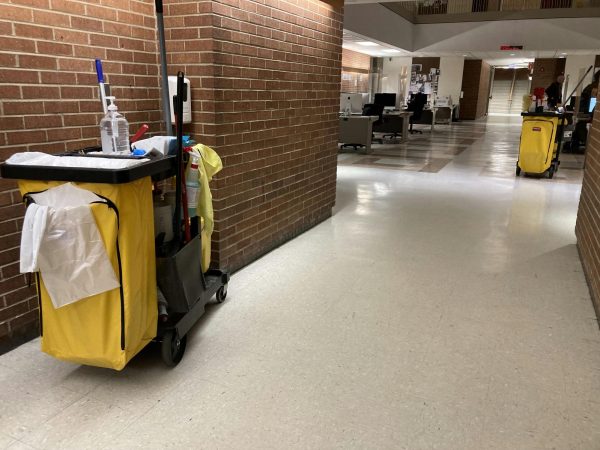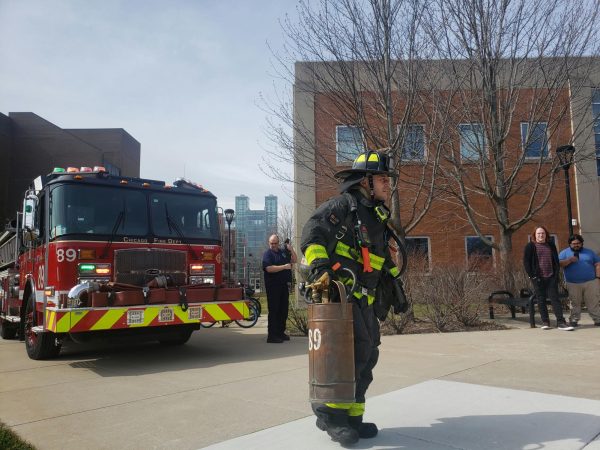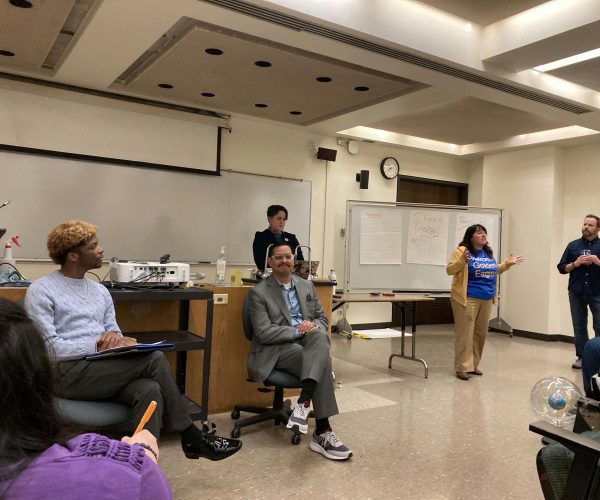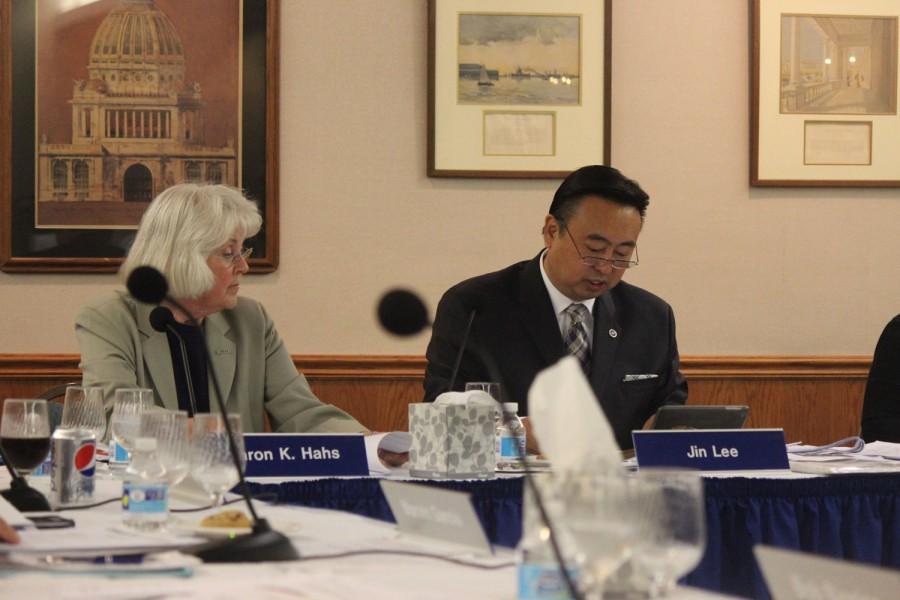Appropriation in Hesitation
Budget Stalemate Hinders Fiscal Year for 2016
President Sharon Hahs with Vice Chair Jin Lee, who was acting Chair for the Board of Trustees while Carlos Azcotia was out in D.C.
Planning for the unexpected
Every public university’s administration in the state faces the same question: How much of their budgets can they expect will need to be cut for the next fiscal year?
At this time, it is unclear how much state funding will be cut; Gov. Bruce Rauner’s February proposal called for 31.5 percent, while the Illinois General Assembly passed a spending plan in May that was 8.6 percent, which was later vetoed by Rauner in June. Since then the budget has been at a stalemate leaving public universities in the dark on how to plan for the fiscal year of 2016.
Up until late summer, the university’s finance committee was working with the proposed 8.6 percent appropriation cost in a preliminary budget that eliminated 60 positions from the school. Although, only 25 of those positions were staffed while the rest were vacant.
“Some of those layoffs ended up with the bumping system…and so they didn’t actually leave the institution. We’ve done everything by the book, and it was very sad and painful, but at this moment, if we had an 8.6 percent cut and had an appropriation, we could function,” said NEIU President Sharon Hahs.
Hahs has had weekly communication with other state university presidents and at a Sept. 17 Board of Trustees meeting said, “In a call yesterday with the presidents and chancellors, we discussed requesting a meeting with the governor of just the twelve presidents and chancellors. A request has been made, it has not been scheduled yet, but we tentatively understand it will be honored.”
At the Board of Trustees meeting on Thursday, Sept. 17, Trustee Jonathan J. Stein asked, “Is our angst any different than the other public schools?”
“Some of them, I think, they’re looking at bridge loans and other things,” Hahs said in response. “And U of I is the big guy and has other resources, but they’re very anxious as well. So their angst is less. But I think we’re in the middle of the angst.”
The BoT plans to release a statement to address Rauner and the current situation: “Whereas the Board of Trustees of Northeastern Illinois University expresses its concern that the state of Illinois has not appropriated a fiscal 2016 budget, the Board wishes to express its deep concern for our students and the future of the state. Be it resolved, the Northeastern Illinois University Board of Trustees encourages an adequate and timely solution to the budget crisis that reflects an appropriation to support a quality education for the students of Northeastern.”
Leftovers
Trustee Omar Duque said he was concerned about the state’s situation and the action items on the meeting’s agenda. “What does us approving and spending say?” asked Duque referring to items that can be found on the president’s report from the Board of Trustees page on NEIU’s website. “I just think how this plays out from a public perception standpoint.”
Hahs answered, “We have to keep in mind the reserves are not for operational costs.”
“Reserves,” which will be funding items specified from the president’s report, are restricted funds that are leftover from budgets of non-indentured entities that must be used in a manner according to the Legislative Audit Commission brought together by the Illinois General Assembly.
These reserve funds come from many different sources, one example mentioned by Hahs is a lap in salary created by an employee leaving the institution and the time between finding someone to fill the position creates a surplus.
“We have been respectful of all the laws; if we have money leftover at the end of the year, it must go into the university reserves and it can’t come out unless it is a major project and has board approval,” Hahs said.
For the fiscal year of 2015, the budget has a tentative outcome of a million dollar positive balance. Presented to the board was a Strategic Planning Development Fund, which would be “used for fostering growth, university improvements, and projects established as priorities by our University Planning and Budget Council, consistent with LAC guidelines.”
A proposed $750,000 would be the initial amount in this fund and it would be held until it is needed throughout the year. In the following year, a report will be released on the items the fund has been spent on.
“Everything we do at this school is for the students. If we fix the sidewalk, it may not seem we’re not doing it for the students at the time. But we always keep students in mind with everything we do,” Hahs said.
Emmanuel Gonzalez








